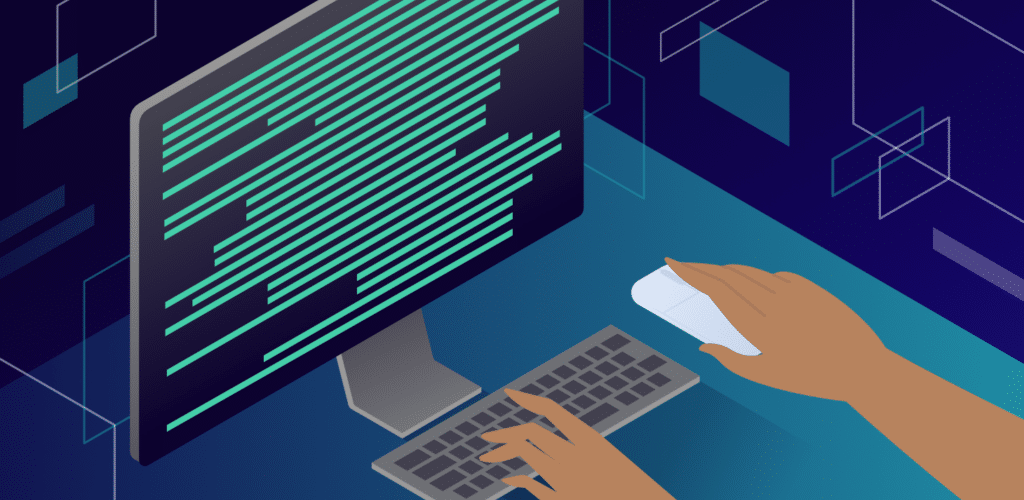In the dynamic world of technology, the safety of your backend is paramount. As a backend developer, you’re well aware that the digital landscape is rife with advanced security threats that can compromise sensitive data and hinder operations.
So, how can you ensure your backend stands strong against these threats? That’s the question we’re here to answer.
In this blog, we’ll navigate through the intricacies of backend security, focusing on the pressing need to understand, address, and fortify against these threats.
Understanding Advanced Security Threats
In the ever-evolving landscape of backend development, being aware of the lurking security threats is the first line of defense. Let’s take a look at some of the notorious culprits:
-
SQL Injection
Imagine someone gaining unauthorized access to your backend by manipulating SQL queries. SQL injection is a common threat where attackers input malicious code into user inputs, potentially exposing or altering your database.
-
Cross-Site Scripting (XSS)
This sneaky technique involves injecting malicious scripts into websites, which can then be unwittingly executed by users. As a backend developer, safeguarding against XSS is vital to protect your users from harmful scripts.
-
Cross-Site Request Forgery (CSRF)
CSRF attacks trick users into performing/executing unintended actions while authenticated. Picture a scenario where a user unknowingly initiates a harmful action, posing a significant risk to the integrity of your backend.
-
Distributed Denial of Service (DDoS) Attacks
Your backend can face a barrage of traffic in a DDoS attack, overwhelming servers and causing service disruptions. Recognizing and mitigating such attacks is essential to ensure uninterrupted service.
-
Man-in-the-Middle (MitM) Attacks
In a MitM attack, an unauthorized third party intercepts communication between two parties. This can lead to sensitive data exposure, including login credentials or confidential information.
-
Security Misconfigurations
Misconfigurations in servers, databases, or cloud services can inadvertently expose sensitive information. Attackers often exploit these oversights, emphasizing the importance of thorough system configurations.
-
Insecure Direct Object References (IDOR)
IDOR occurs when a user can access or modify unauthorized data by manipulating object references. This threat can lead to unauthorized access to files, databases, or other critical resources.
-
API Security Vulnerabilities
As APIs become integral to backend functionality, securing them is paramount. Vulnerabilities such as insufficient authentication, data exposure, or insecure endpoints can pose significant risks.
-
Zero-Day Exploits
Zero-day exploits target undiscovered vulnerabilities, giving attackers the upper hand until developers identify and patch them. Staying vigilant for security updates and promptly applying patches is crucial.
-
Malware Injection
Malicious software injected into the backend system can wreak havoc. This may include viruses, worms, or ransomware, compromising data integrity and system functionality.
Real-world examples of security breaches
Here are some recent security breaches that highlight the importance of continuous security updates:
Marriott (2020)
Hackers accessed the data of 500 million guests through compromised employee credentials, exposing names, addresses, birthdays, and loyalty program information. This resulted in millions in fines and a significant dent in brand reputation.
T-Mobile (2023)
Malicious actors exploited an API vulnerability to steal data of 37 million customers, including phone numbers and addresses. While sensitive financial information was not exposed, the breach still caused distress and inconvenience for affected customers.
Twitter (2023)
Hackers used targeted phishing attacks to compromise employee accounts and gain access to administrator tools. This enabled them to take over high-profile accounts and post scam messages, highlighting the criticality of secure employee access.
Consequences of Security Breaches
Now, let’s take a look at the consequences of security breaches.
Financial Losses
Companies often face substantial financial setbacks due to legal consequences, compensations, and recovery expenses.
Reputation Damage
Customer trust is hard-earned and easily lost. Security breaches tarnish a company’s reputation, impacting customer loyalty and brand credibility.
Regulatory Penalties
Depending on the industry, organizations may face severe penalties for failing to safeguard sensitive information or violating data protection regulations.
Operational Disruptions
Breaches can lead to downtime, disrupting regular operations and causing additional financial strain.
Legal Ramifications
Companies may face lawsuits from affected parties, adding legal complications and further financial burdens.
Implementing Zero-Trust Architecture
Now that we’ve delved into the sobering realities of security breaches, it’s time to shift our focus to a proactive approach – implementing a zero-trust architecture.
What is Zero-Trust Architecture?
Imagine a digital world where trust is not assumed, even within your own network. That’s the essence of zero-trust architecture. In traditional models, once inside the network, users often enjoy wide access. Zero trust challenges this norm, requiring continuous verification regardless of the user’s location – within or outside the network.
Benefits of Adopting a Zero-Trust Approach
- Enhanced Security Posture: By assuming that threats can come from anywhere, zero trust creates a more robust defense against both internal attacks and external threats.
- Reduced Attack Surface: Traditional perimeters are often porous, allowing lateral movement for attackers. Zero trust minimizes the attack surface by limiting access based on strict verification.
- Adaptability to Modern Work Environments: With the rise of remote work and cloud-based services, zero trust aligns seamlessly with the dynamic nature of modern work environments.
Key Components of a Zero-Trust Architecture
- Micro-Segmentation: Divide your network into smaller segments, restricting lateral movement. Even if one segment is compromised, the damage or impact is contained.
- Continuous Monitoring and Verification: Regularly verify the trustworthiness of devices, users, and applications. Continuous monitoring ensures any anomalies are promptly identified.
- Least Privilege Access: Grant the minimum level of access required for a user or system to perform its job functions. This principle limits potential damage in case of a breach.
Best Practices for Data Encryption
Having explored the concept of zero-trust architecture, let’s turn our attention to another critical aspect of backend security: data encryption.
In an era where data is a prized asset, safeguarding it against unauthorized access is paramount.
Importance of Encrypting Sensitive Data
Data encryption serves as a robust shield, rendering sensitive information unreadable to unauthorized entities. Whether it’s user credentials, financial transactions, or personal details, encrypting this data adds an extra layer of security.
Different Encryption Algorithms and Their Strengths
- Symmetric Encryption: In symmetric encryption, the same key is used for both encryption and decryption. It’s efficient for large data sets but requires secure key distribution.
- Asymmetric Encryption: Asymmetric encryption involves a pair of public and private keys. While slower, it eliminates the need for secure key exchange, enhancing overall security.
Securing Data in Transit and At Rest
- Data in Transit: Use secure communication protocols (HTTPS, TLS) to encrypt data while it’s transferred between systems. This is crucial for protecting information during transactions or communication with APIs.
- Data at Rest: Encrypt stored data to ensure its security, especially on servers or in databases. This prevents unauthorized access even if physical access to the storage medium is gained.
Managing Encryption Keys Securely
The effectiveness of encryption relies heavily on how well you manage the keys. Here are key practices:
- Key Rotation: Regularly change encryption keys to mitigate the impact of a compromised key.
- Secure Storage: Store encryption keys in secure, separate locations from the encrypted data.
Access Control Best Practices
Effectively managing who can access what within your system is fundamental to overall security.
Role-Based Access Control (RBAC) Overview
RBAC simplifies access management by assigning specific roles to users based on their responsibilities. This ensures that individuals have the necessary permissions for their tasks and nothing more.
Implementing RBAC for Fine-Grained Access Control
- Define Roles Clearly: Clearly outline roles and their associated permissions. Common roles may include administrators, developers, and support staff.
- Granular Permissions: Break down permissions into fine-grained details. This prevents users from having unnecessary access and reduces the risk of inadvertent data exposure.
Multi-Factor Authentication (MFA) for Enhanced Security
MFA adds an additional shroud of protection by requiring users to provide several forms of identification before granting access. This typically involves a mix of passwords, biometrics, or authentication tokens.
- Diversify Authentication Factors: Utilize a combination of something the user knows (passwords), something they have (smart cards or tokens), and something they are (biometrics).
- Adaptive Authentication: Implement adaptive MFA, adjusting the level of authentication based on user behavior and risk factors.
Regularly Auditing and Reviewing Access Controls
- Periodic Access Audits: Conduct regular audits to ensure that access rights align with current roles and responsibilities. This helps identify and correct any discrepancies promptly.
- Employee Lifecycle Management: Adjust access rights during onboarding, role changes, or when employees leave the organization. This ensures that permissions are always aligned with job responsibilities.
Monitoring and Incident Response
Continuous monitoring is the heartbeat of a secure backend. It involves real-time scrutiny of system activities, user behavior, and network traffic. By staying vigilant, you can detect anomalies that might indicate a security threat.
Building a Robust Incident Response Plan
- Define Incident Severity Levels: Categorize incidents based on their severity to prioritize responses effectively. This could range from low severity issues to critical security breaches.
- Establish a Response Team: Formulate a dedicated incident response team with precisely defined roles and responsibilities. This ensures a coordinated and swift response when an incident occurs.
Utilizing Logging and Analytics Tools
- Comprehensive Logging: Implement thorough logging of system activities. This creates a trail of events that can be invaluable for post-incident analysis.
- Analytics for Threat Detection: Leverage analytics tools to sift through vast volumes of data, detecting patterns that may indicate malicious activities. This proactive approach increases your ability to detect threats early.
Learning from Past Incidents for Continuous Improvement
- Post-Incident Analysis: After resolving an incident, conduct a thorough analysis. Understand how the incident occurred, what measures were effective, and where improvements can be made.
- Update Incident Response Plan: Incorporate lessons learned into your incident response plan. This ensures that your approach evolves, becoming more resilient with each incident.
Wrapping up
As we wrap up the journey through backend security, remember that cybersecurity is an ever-evolving field. Stay informed, adapt your strategies, and keep your backend resilient against emerging threats.
If you have any questions or insights to share, feel free to join the conversation. Safe coding!






Add comment